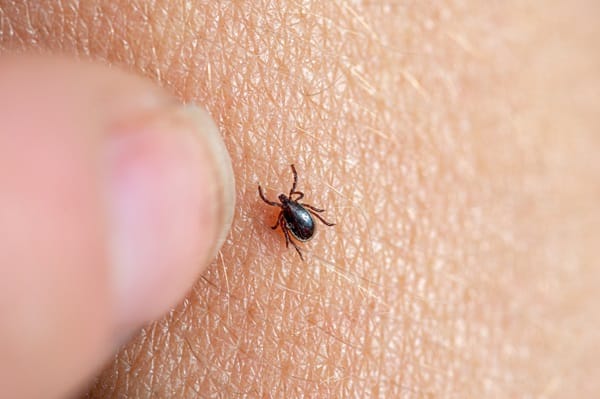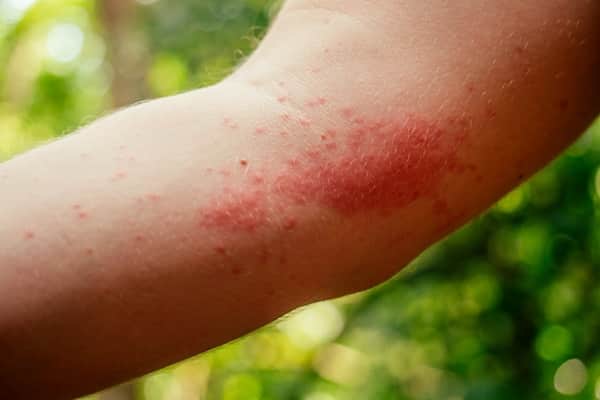Insect-borne diseases are a growing public health concern that often go unnoticed until they reach epidemic proportions. From the Zika virus to Lyme disease, these illnesses are transmitted by common insects like mosquitoes, ticks, and fleas. Understanding the hidden risks associated with insect-borne diseases is crucial for both individual and public health. This article delves into the types of insects responsible for transmitting diseases, the geographical hotspots where these diseases are most prevalent, and the environmental factors that contribute to their spread.
Contents
- 1 Common Insects That Transmit Diseases
- 2 Geographical Hotspots for Insect-Borne Diseases
- 3 Environmental Factors Contributing to Disease Spread
- 4 Personal Precautions to Take
- 5 Early Symptoms to Watch For
- 6 Diagnostic Tests and Treatments
- 7 Long-Term Health Implications
- 8 Societal and Economic Impact
- 9 Navigating the Hidden Risks
Common Insects That Transmit Diseases

Insects are more than just a nuisance; they can be carriers of serious diseases. Mosquitoes, for instance, are notorious for spreading Malaria and the Zika virus. Ticks are another culprit responsible for transmitting Lyme disease, which can lead to severe joint pain and neurological issues if left untreated. Fleas, though less common, can carry bacteria that cause the Plague.
Understanding which insects are most likely to transmit diseases is the first step in prevention. By knowing what to look out for, individuals can take appropriate precautions, such as using insect repellents or wearing protective clothing. This knowledge is particularly important for those traveling to or living in areas where these insects are prevalent.
Geographical Hotspots for Insect-Borne Diseases

Certain geographical areas are more prone to outbreaks of insect-borne diseases. Tropical regions, for example, are hotbeds for mosquito-borne illnesses like Malaria and Dengue fever. These areas often have the right combination of climate and environment that allows mosquitoes to thrive.
Similarly, wooded or grassy areas are common habitats for ticks, making Lyme disease more prevalent in such locations. Urban environments are not exempt either; they can be breeding grounds for fleas that may carry diseases. Recognizing these geographical hotspots is essential for targeted public health interventions and for individuals to take extra precautions when in these areas.
Environmental Factors Contributing to Disease Spread

The environment plays a significant role in the spread of insect-borne diseases. Climate change, for example, is expanding the habitats where disease-carrying insects can live and breed. Warmer temperatures and increased rainfall create ideal conditions for mosquitoes, thereby increasing the risk of diseases like Malaria and Zika.
Human activities also contribute to the problem. Deforestation and urbanization are leading to increased human contact with insect habitats, elevating the risk of disease transmission. Additionally, pollution and poor water quality can create breeding grounds for disease-carrying insects. Understanding these environmental factors is crucial for implementing effective preventive measures.
Personal Precautions to Take

Taking personal precautions is essential in reducing the risk of contracting insect-borne diseases. The use of insect repellents containing DEET or Picaridin can offer protection against mosquito and tick bites. Wearing long sleeves and pants made of tightly woven materials can also serve as a physical barrier against insect bites. Additionally, using bed nets treated with insecticide can provide protection in areas where mosquito-borne diseases are prevalent.
Vaccinations are another line of defense, especially for diseases like Yellow Fever and Japanese Encephalitis, which are also transmitted by mosquitoes. It’s important to consult healthcare providers for the most current advice on vaccinations, particularly when traveling to high-risk areas. Pre-travel consultations can provide tailored advice on the necessary precautions to take, including the use of antimalarial medication.
Early Symptoms to Watch For

Early detection of symptoms is crucial for effective treatment of insect-borne diseases. Common early symptoms include fever, chills, and headaches, which are often mistaken for the flu. Skin rashes are another telltale sign, especially in the case of Lyme disease. Fatigue and muscle aches may also be indicative of an insect-borne illness and should not be ignored.
Being vigilant about these symptoms is particularly important for those who have recently traveled to high-risk areas or have spent time in environments where disease-carrying insects are prevalent. Prompt medical attention can make a significant difference in treatment outcomes. Diagnostic tests can confirm the presence of an infection, enabling timely intervention and reducing the risk of complications.
Diagnostic Tests and Treatments

Once symptoms are observed, diagnostic tests are the next step in confirming the presence of an insect-borne disease. Blood tests are commonly used to diagnose diseases like Malaria and Lyme disease. These tests detect the presence of pathogens or antibodies in the blood, providing a definitive diagnosis that guides treatment options.
Treatment for insect-borne diseases often involves the use of antibiotics or antiviral medications. For example, Malaria is typically treated with antimalarial drugs, while Lyme disease often requires a course of antibiotics. Early diagnosis is crucial, as delayed treatment can lead to severe complications, including organ failure or long-term health issues. Therefore, seeking medical advice promptly upon noticing symptoms is imperative.
Long-Term Health Implications

Insect-borne diseases can have severe long-term health implications if not promptly and effectively treated. For instance, untreated Lyme disease can evolve into chronic Lyme, characterized by persistent symptoms like fatigue, joint pain, and neurological problems. Similarly, severe cases of Malaria can lead to complications like anemia, respiratory distress, and even organ failure.
Zika virus presents another set of challenges, particularly for pregnant women, as it can cause birth defects and neurological issues in newborns. Some insect-borne diseases can also lead to long-term conditions affecting the heart, liver, and other organs. Understanding these potential long-term health implications underscores the importance of early diagnosis and treatment.
Societal and Economic Impact

The societal and economic impact of insect-borne diseases is substantial. Healthcare systems often face a significant burden in treating these diseases, especially during outbreaks. The cost of diagnosis, treatment, and long-term care can quickly add up, straining public health resources. In developing countries, where healthcare infrastructure may be less robust, the impact can be devastating.
Beyond healthcare costs, insect-borne diseases also affect work productivity. Individuals suffering from chronic symptoms may find it difficult to maintain regular employment, leading to a loss of income for families and reduced economic output for communities. The ripple effects of these diseases extend far beyond individual health, affecting society at large.
Insect-borne diseases pose a significant threat to both individual and public health, affecting millions globally. Awareness of the insects responsible for transmitting these diseases, the geographical hotspots, and contributing environmental factors is crucial for prevention. Personal precautions, early symptom recognition, and prompt medical intervention can mitigate risks and reduce long-term health implications. The societal and economic impact of these diseases further emphasizes the need for collective action. Public awareness campaigns, preventive measures, and robust healthcare interventions are essential steps in combating the hidden risks associated with insect-borne diseases.


